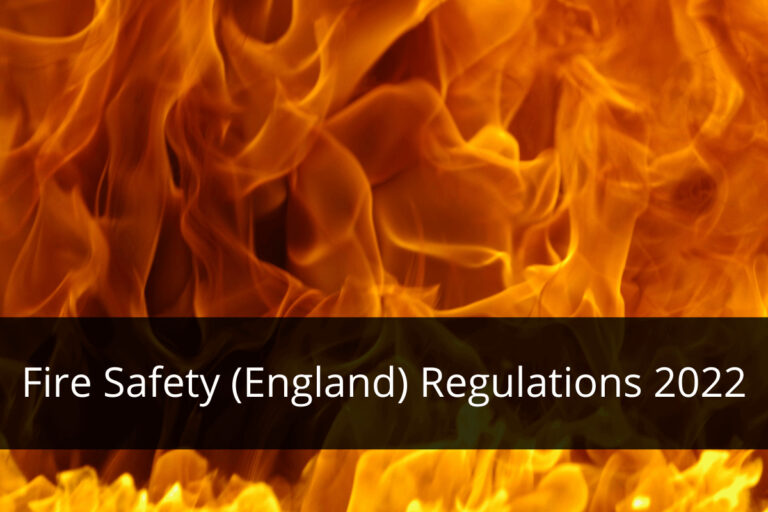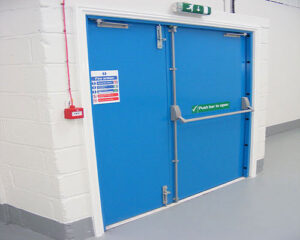
Firefighter’s tips for fire doors
Learn about fire doors and the standards you need to make sure a property you own or manage meets.
From London Fire Brigade
What do you need to know?
What are fire doors and why do they matter?
Fire doors are a really important element of your fire safety strategy. Used correctly, they stop fires from spreading through a building, giving people time to escape and the Brigade time to attend and potentially save your premises. If a fire door is properly made by a BWF certified manufacturer, with compatible parts, and certified by an accredited third party, it should hold back a fire for 30 minutes or more.Getting the right fire doors in place is an important responsibility, though you will also need to consider fire detection and sprinklers.
The components of a door – hinges, seals, handles and glazing – are as important as the door itself. This is because, in a fire, doors can warp, move and allow smoke and fire through the opening. The seals and the gaps between the door frame and the wall are really vital too. They also stop smoke and fire spreading as quickly.
Why do you need to provide fire doors?
They are specifically designed to withstand fire for up to 30 minutes.
They are a legal requirement for flats which open onto communal areas shared with other tenants. This is to make sure crucial escape routes are protected if a fire breaks out.
They are designed to automatically close behind you in the event of fire, holding flames back and stopping the spread of the fire and toxic smoke into escape routes, corridors and other flats in the block.
Did you know?
Property owners are required by law (The Regulatory Reform (Fire Safety) Order 2005) to make sure premises reach required standards of fire safety.Are you a tenant?
Read our fire door advice for tenants, and find out how to check if your fire doors are safe
Who is responsible for fire doors?
If you are responsible for a property, it’s likely that you need to make some fire safety precautions to keep the people who use it safe. This includes almost all buildings, places and structures other than individual private homes – that’s individual flats in a block or family homes. Property manager’s responsibilities include shared areas in houses in multiple occupation (HMOs), blocks of flats and maisonettes.
What about old doors – are they OK?
There is a difference between modern fire doors and their requirements and older type doors, often called ‘Notional fire doors’. These doors may have been in place for many years and met earlier standards of manufacture and legislation. However, this doesn’t mean that they are now not fit for purpose, providing they are still in good condition they will still provide the service for which they were intended.
Modern doors are equipped with what’s called intumescent strips and cold smoke seals. Older ‘notional’ doors may not have these fitted, and are often fitted into frames with a 1 inch or 25 mm door stop. The ‘notional’ door may be suitable in place if it is not warped or gapped to the extent that it requires replacement, its replacement will be a modern style fire door. Where doors are replaced that are required to be fire resisting they should not be replaced by ordinary doors and the person replacing the door should ensure that the door is a fire door.
Can I have a window in a fire door?
Absolutely, yes. Some fire doors are fitted with glazing – what’s termed a ‘vision panel’, these are subject to the test procedure when constructed and you are not allowed to retrofit glazing by cutting the door unless this is done by a door specialist, the BWF-CERTIFIRE scheme will be able to provide further information if this is a requirement.
Hygienic door handles
In response to the coronavirus pandemic, you might be considering installing hygienic door handles. As long as these handles do not compromise a fire doors integrity or restrict the use of an escape route, they should be fine to use. If you are unsure, check with the accredited professional who you have asked to install your fire doors for more information.
Hinges and letter boxes
Fire doors will have at least 3 hinges with a melting point above 800 degrees centigrade and apertures for glazing and for letter boxes should be in place at testing. Arson Reduction letterboxes are available as a retrofit to the existing aperture and can be made available form the London Fire Brigade in certain instances – you can find out more here.
Firefighter’s tips for fire door installation and use
There are some simple must-knows when it comes to fire doors and their safe use and installation:Do…
Don’t…
How often do I need to get fire doors checked?
It depends on your circumstances. Though BWF-CERTFIRE Best Practice Guide suggests every 6 months, we believe that a risk-assessed approach is also appropriate for many. However, if your building is a hotel, or is home to anyone who might not be able to quickly respond to or escape from a fire, 6-monthly checks are essential.
Link to articleUnlock the true value of our services with our affordable pricing options!
| Item | Price |
|---|---|
| 1-5 Doors | £99 |
| 5-10 Doors | 199 |
| Aditional Door | £17/hour |
| Fire Door Maintenance | Request a quote |
| Item | Price |
|---|---|
| External Fire Doors | Request a quote |
| Glazed Fire Doors | Request a quote |
| Fire Rated Door Finishes | Request a quote |
| Item | Price |
|---|---|
| 1-5 Doors | £99 |
| 5-10 Doors | 199 |
| Aditional Door | £17/hour |
| Fire Door Maintenance | Request a quote |
Customer reviews
Frequently asked questions:
Our 30 minute fire doors (FD30) are 44mm thick
Our 60 minute fire doors (FD60) are 54mm thick
The amount that can be removed from the edges of a fire door differs from one door to the next and depends on several factors, including the exact materials used during construction and guidelines from the fire rating certificate. Accurate trimming information can only be provided by the manufacturer on a case-by-case basis after the door has been completed.
There are no set rules that detail how long a fire door lasts before it needs to be replaced. The condition of the door should be monitored and checked at least every 6 months to ensure it is in good working order. Fire doors should comply with the latest fire door regulations and so it is important to keep up to date with any changes in regulations which may mean your doors are no longer fit for purpose.
All our fire doors satisfy the DDA regulations.
In order to calculate the weight of a fire door you will need to know the weight per square meter (kg/m2) of the doors core. This is determined using the thickness of the door as follows: 44mm = 55kg 54mm = 75kg The calculation below can be used to determine the approximate weight of the fire door. Please note that the calculation does not take glass weight into account. Width X height X thickness X kg/m2 of the door’s core = Weight of fire door. For example for a door that was 926x2040mm with a thickness of 44mm the following calculation would give an approximate weight: 0.926 X 2.040 X 0.44 X 55 = 45 KG.









